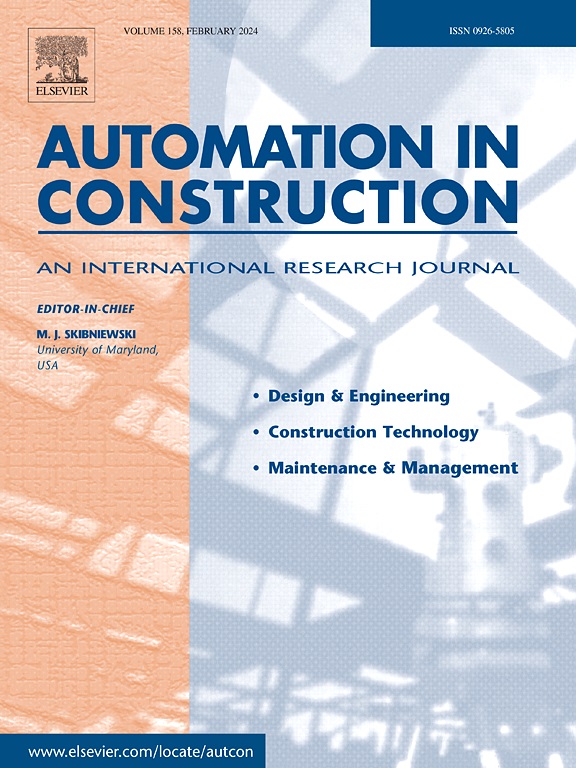利用探地雷达智能检测建筑外保温层的粘接状态
IF 9.6
1区 工程技术
Q1 CONSTRUCTION & BUILDING TECHNOLOGY
引用次数: 0
摘要
建筑外保温层粘结状态对保温和长期安全至关重要,但现有检测方法缺乏效率和准确性。本文探讨了利用探地雷达(GPR)技术对建筑外保温层粘接区域进行准确估算,并精确识别顶部和路基的粘接缺陷。提出了一种基于探地雷达的端到端智能检测方法,结合多任务分支网络,自动选择c扫描深度切片进行语义分割估计粘接区域,利用b扫描切片进行脱粘缺陷目标检测。结果表明,面积估计的相对误差为0.70%,剥离检测精度达到78.45%,该模型在复杂场景下表现良好。介绍了探地雷达在建筑检测中的应用,促进了隐患的发现和技术的进步。未来的工作将重点改进杂波抑制算法和c扫描深度切片提取方法,进一步提高检测效果。本文章由计算机程序翻译,如有差异,请以英文原文为准。
Intelligent detection of bonding status in external building insulation layers using ground-penetrating radar
The bonding status of external building insulation layer is crucial for thermal insulation and long-term safety, but existing detection methods lack efficiency and accuracy. This paper explores the use of Ground-Penetrating Radar (GPR) technology for accurately estimating bonding areas and precisely identifying top and subgrade debonding defects in external building insulation layers. It proposes an end-to-end intelligent detection method based on GPR, incorporating a multi-task branch network that automatically selects C-scan depth slices for semantic segmentation to estimate bonding areas and utilizes B-scan slices for target detection of debonding defects. Results show that area estimation’s relative error is 0.70%, debonding detection accuracy reaches 78.45%, and the model performs well in complex scenarios. This paper provides the application of GPR in building inspection, promoting hazard discovery and technological advancement. Future work will focus on improving clutter suppression algorithms and C-scan depth slice extraction methods to further enhance detection results.
求助全文
通过发布文献求助,成功后即可免费获取论文全文。
去求助
来源期刊

Automation in Construction
工程技术-工程:土木
CiteScore
19.20
自引率
16.50%
发文量
563
审稿时长
8.5 months
期刊介绍:
Automation in Construction is an international journal that focuses on publishing original research papers related to the use of Information Technologies in various aspects of the construction industry. The journal covers topics such as design, engineering, construction technologies, and the maintenance and management of constructed facilities.
The scope of Automation in Construction is extensive and covers all stages of the construction life cycle. This includes initial planning and design, construction of the facility, operation and maintenance, as well as the eventual dismantling and recycling of buildings and engineering structures.
 求助内容:
求助内容: 应助结果提醒方式:
应助结果提醒方式:


